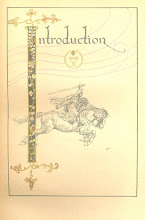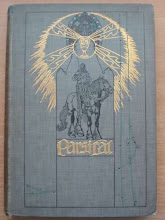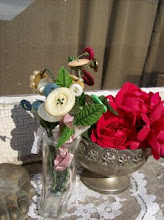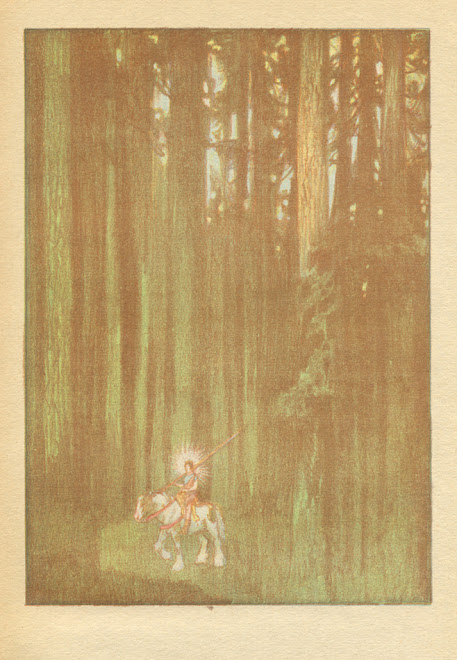Wednesday, July 9, 2008
Fideli D'Amore
My creative interests are starting to come together in a way that is blowing my mind. I blogged in my last post below about how my housemate Ryan Wartena wants to set my whole book The Flower of Knighthood to music, and how, as insanely ambitious as that sounds, it has a precedent in the performance of bardic poetry and troubadour music, which are big influences on me. I have long been interested in the troubadours and trouveres (court musicans and poets in southern and northern France, respectively) and in the whole culture of courtly love in medieval Europe for which they provided the artistic expression. I am also completely fascinated with all kinds of mysticism in general and Sufism in Islam in particular, and I've been reading a great deal about the academic theory that Sufis in Moorish Spain greatly influenced the troubadours with their ecstatic hymns to the Beloved, i.e., God. They were not the only influence; there was also the cult of Mary, the older practices of pagan religion in Europe that placed a goddess in a place of high regard and other influences from the East via the Crusades, but I do accept the hypothesis that Sufi practice was likely a powerful component in the creation of that artistic and spiritual movement. I was drawn into the orbit of a Sufi order in New York that is under the direction of a female shayka of French descent, so I am fascinated for personal reasons to explore this meshing of worlds. The more I learn, the more I see that all of my major interests fit together to give a sort of breathtaking big picture of how this world is not composed of separate things but is instead a tapestry of interacting threads. This truly is one world, and there is one God, no matter in what culture He appears or by what name He is worshipped. The highest form of religion is to transcend forms, as mysticism does, and realize the importance of the Object rather than that of the path that reaches Him. My music project, Fleur D'Amour, The Flower of Love, pulls together all of my interests and is highly influenced by troubadour philosophy and aesthetics. The European mystics and artists also had a reverse influence on Islamic thought, as well, in a circuit of social interaction. A book I recently mentioned in this blog, The Man of Light in Iranian Sufism by Henry Corbin (a French scholar also enamored of Eastern mysticm), had extensive commentary about Sufic fideli d'amore, the devotion to the path of love as the highest route to spiritual realization. That's an Italian term, and Corbin also used it to refer to the social and artistic milieu of Dante Alighieri, whose life falls into the time period of the height of courtly love. The middle ages are thought by many to be an era of barbarism and backwards thought, but there was a great interchange of cultures occurring in both the East and West that generated awe-inspiring cultural achievements. Alchemy, the spiritual practice of self-development as symbolized by the creation of gold from lead, began life as an Arabic discipline (al-kimiya) and was widely adopted in Europe. Jewish, Muslim and Christian thought interacted particularly in southern Europe to create such treasures as Kabbalah and the writings of Teresa of Avila. We could do a lot worse than to look to our own history for an example of how to communicate well with the Middle East. There have always been those men more interested in power than in wisdom who followed a path of conquest and strife, but there have also always been examples of mystics, scholars and artists who were happy to meet strangers from afar whose different sensibilites breathed new life into their own culture. My art is all the richer for having learned more about this gorgeous interplay and it makes more sense to me now that I have learned why I was drawn to seemingly disparate things. They really aren't disparate - Persia communicated with Paris long ago, and produced a context that generated such glories as Le Conte Du Graal. Those people managed to create that exchange in a time where travel between such farflung regions took years of dangerous effort - what a cultural and spiritual Renaissance we can look forward to now if we fully use this incredible tool, the internet, that connects mankind without boundaries. I put Sufis into the very heart of the Grail fellowship in my Holy Grail book, because they belong there. The Grail account may be descended from a Persian story called The Cup of Jamshid, and even if the stories are not directly related, they are archetypally so, at the level of the universality of human experience. Courtly love is itself an archetypal manifestation of anima and animus, expressed in the devotion of one sex to the opposite one in the ongoing application of unconditional love without expectation of material gain. It's a lovely model for unselfish devotion to the good of another as the path to supreme attainment, another pattern of so-called primitive medieval behavior that the modern world would do well to adopt.
Subscribe to:
Post Comments (Atom)









No comments:
Post a Comment